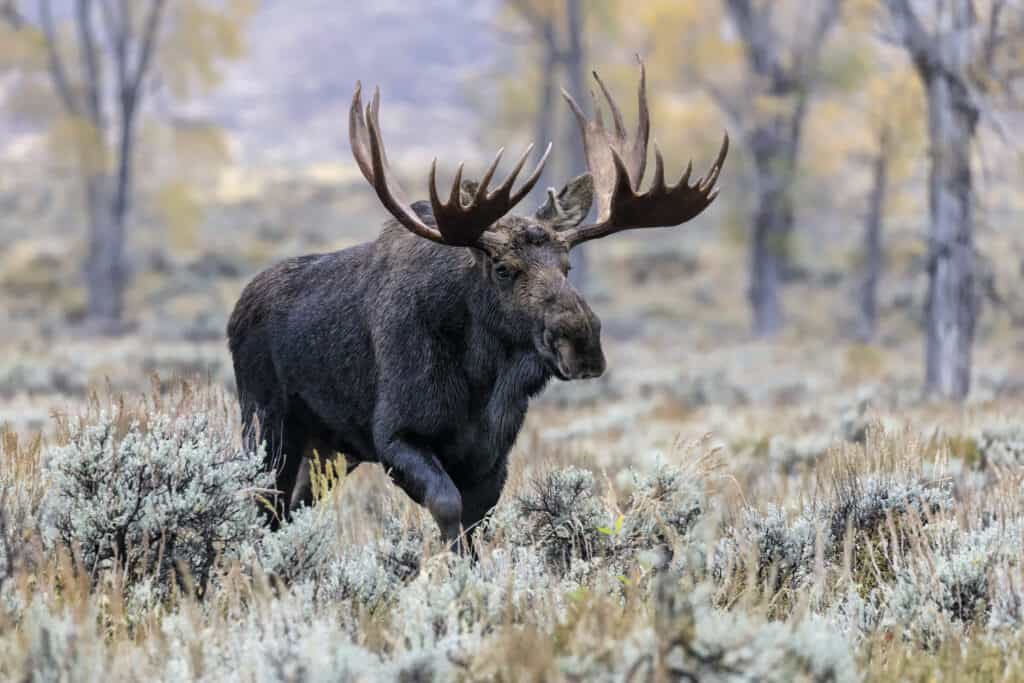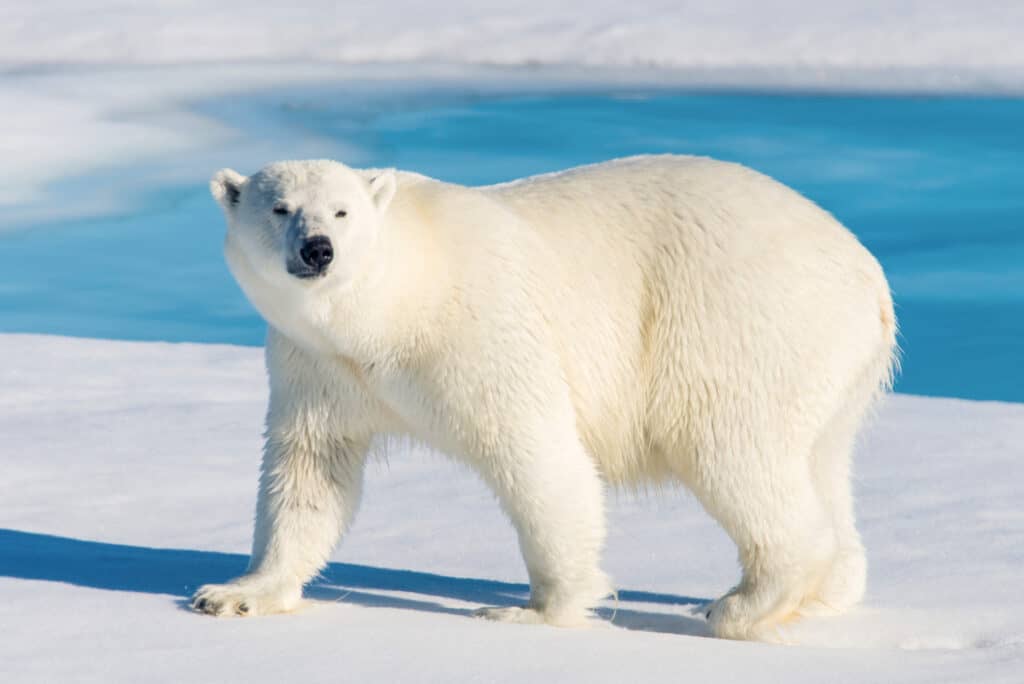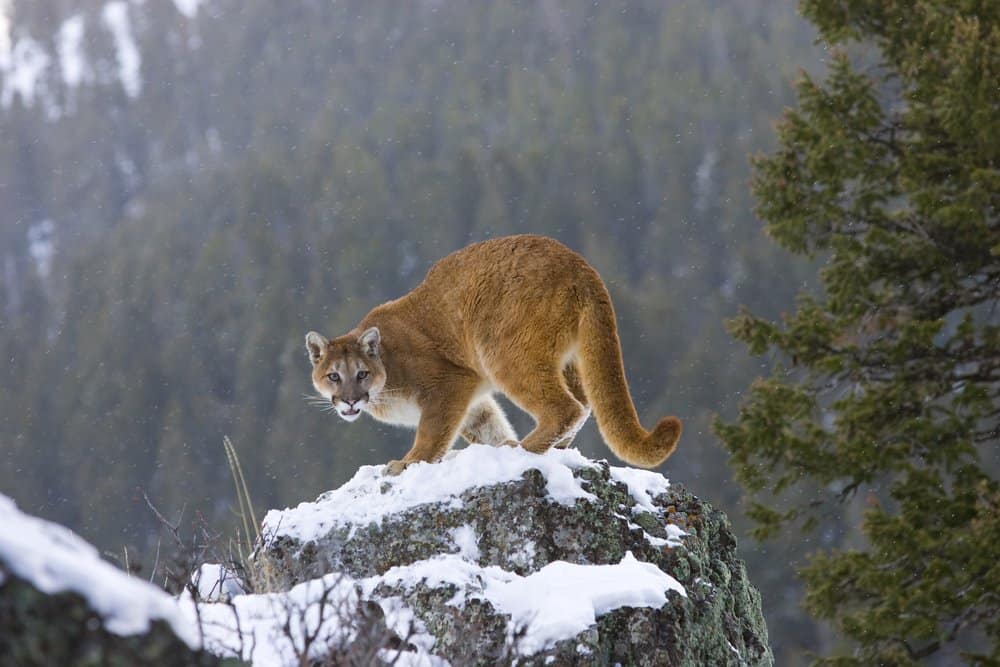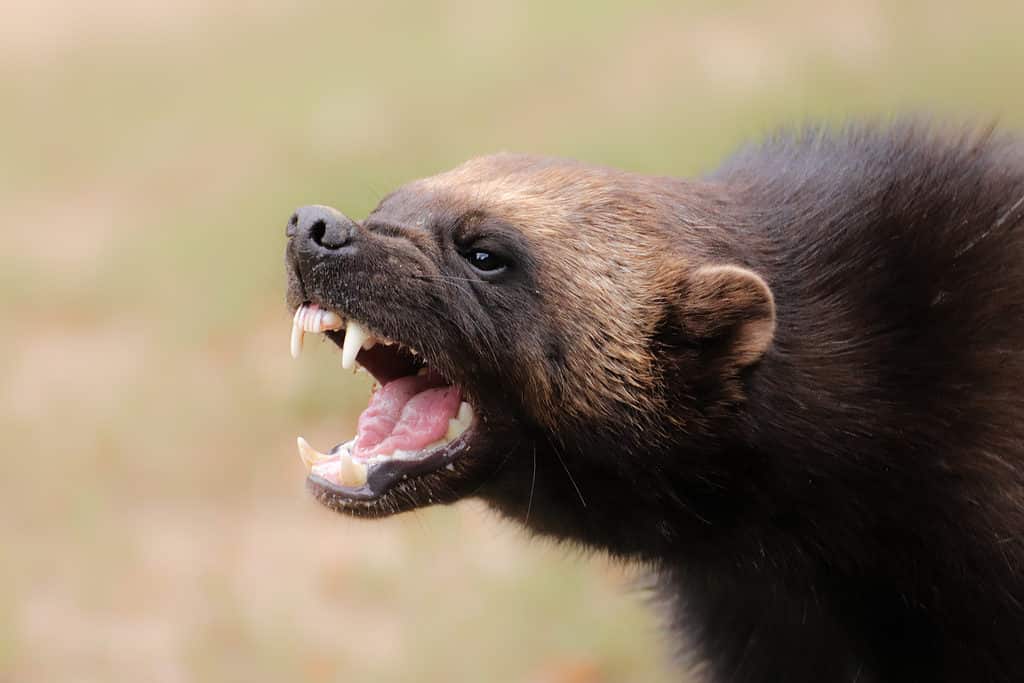Canada has some of the largest, most aggressive animals in North America. Due to the country’s extensive wild and uninhabited spaces, many animals roam freely and thrive in the great outdoors. While it shares many of the same land mammals as the United States, it adds a few more on the list not known or abundant in America. Check out this list of the six most aggressive animals in Canada and learn why they are so dangerous.
1. Moose
 Moose kill more humans than any other animal in Canada
Moose kill more humans than any other animal in Canada
©David Osborn/Shutterstock.com
While moose are not typically aggressive animals, we had to include them on the list, as they are the deadliest animal in Canada. But not in the way you might think. Moose cause many vehicle collisions due to humans expanding highways and encroaching on their habitat. But moose can also attack humans when they feel threatened or their young are nearby. Bulls may also attack during the fall rut. And they can cause a lot of damage due to their six-foot-tall bodies that weigh up to 1,500 pounds. You can find moose across most of Canada, except the Arctic and Vancouver Island.
2. Polar Bear
 Polar bears are the world’s largest extant bears. They are one of the most aggressive animals in Canada
Polar bears are the world’s largest extant bears. They are one of the most aggressive animals in Canada
©iStock.com/Alexey_Seafarer
60% of the world’s polar bears live in Canada, with roughly 17,000 roaming the Arctic regions. And 90% of Canadian polar bears live in the northernmost territories of Nunavut and the Northwest Territories. Polar Bears are the most dangerous bear species to humans. They strictly eat meat and see humans as a food source if they’re hungry enough. Polar bears are also the largest species, standing over nine feet tall and weighing 1,500 pounds. And they are apex predators that can pose a significant risk to human life and property. While they may not be inherently voracious and aggressive, being more cautious during confrontations, polar bears will attack if hungry or provoked.
3. Cougar
 Cougars are the biggest wildcats in Canada
Cougars are the biggest wildcats in Canada
©S.R. Maglione/Shutterstock.com
Cougars, also known as mountain lions, are the biggest wildcats in Canada. They are abundant in Western Canada, but you can also find them in Eastern Canada, Yukon Territory, Manitoba, and Northwest Territories. Alberta, British Columbia, and Saskatchewan have some of the largest concentrations, including breeding populations. Cougars are one of the most elusive large cats in the world, meaning they don’t typically show themselves or engage with people. In fact, they see us more than we see them. However, in areas where we overlap with their territories, cougars can become aggressive and dangerous toward humans. Cougar attacks are pretty rare, but these wild animals may lash out if they feel threatened or if you stimulate their predator-prey response, such as running or playing dead.
4. Grizzly Bear
 There are 26,000 grizzlies in Canada
There are 26,000 grizzlies in Canada
©Jack Nevitt/Shutterstock.com
Grizzlies are one of the largest species of brown bears in the world, and there are about 26,000 of them in Canada. And over half of them live in British Columbia, while the rest are spread out in Alberta and the three territories. While they tend to stay away from heavily populated areas, it’s not uncommon to spot them along hiking trails in nearby towns. Grizzly bears can act aggressively when defending their personal space, food, or cubs. And many times you may not realize that you’ve overstepped. While brown bears have no desire to interact with humans, they will attack if they think you are a threat.
5. Wolf
 Northwestern wolves are the largest wolf species in the world
Northwestern wolves are the largest wolf species in the world
©Mircea Costina/Shutterstock.com
Canada has northwestern wolves, the largest wolf species in the world, reaching up to 137 pounds. Canada is home to nearly 60,000 wolves, the world’s second-largest population after the Soviet Union. Grey wolves are skillful predators and territorial. But they avoid humans, roads, and buildings. They are not nearly as aggressive as bears and moose, but attacks on humans or pets happen occasionally. Wolves don’t typically attack unless they are cornered, pursued, or caught in a trap. If you leave them alone, chances are they will leave you alone.
6. Wolverine
 The wolverine is a powerful and territorial animal
The wolverine is a powerful and territorial animal
©DenisaPro/Shutterstock.com
Wolverines are the largest of the weasel family. And while you may not think that such a small creature could be dangerous, wolverines are powerful, aggressive, and territorial animals. Most wolverines in Canada are found in the coastal tundra and boreal forests of the Northwest Territories, Yukon, British Columbia, and Nunavut. These wild animals are unbothered by most large predators, even fighting wolves for food. Wolverines may occasionally attack or kill pets and livestock, but there are no documented attacks of wolverines on humans.

